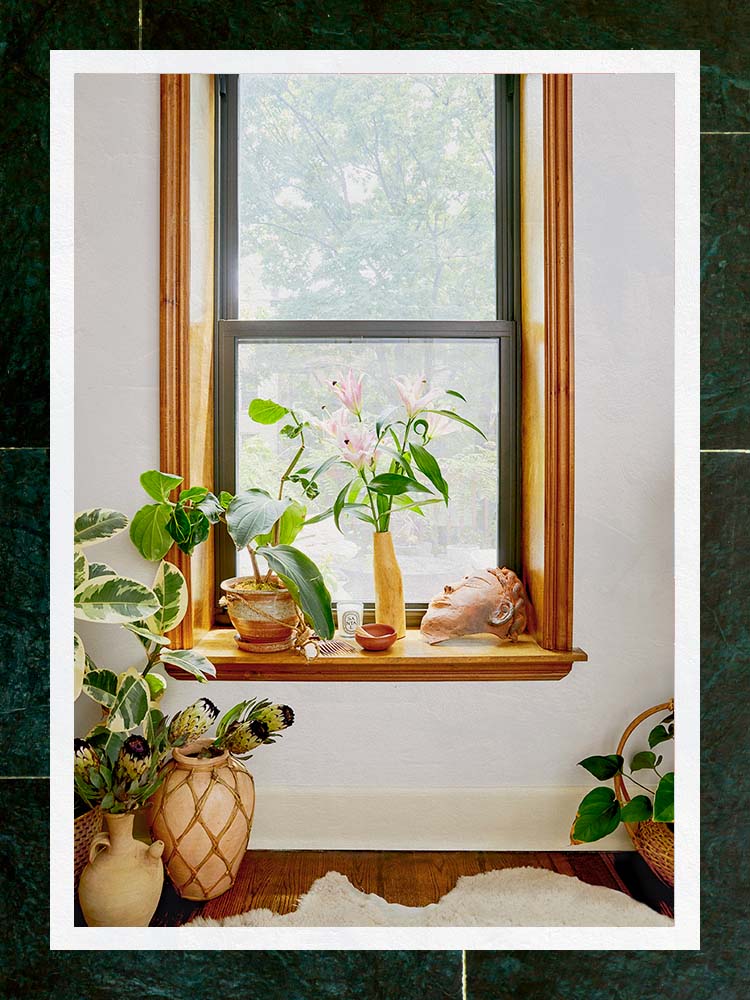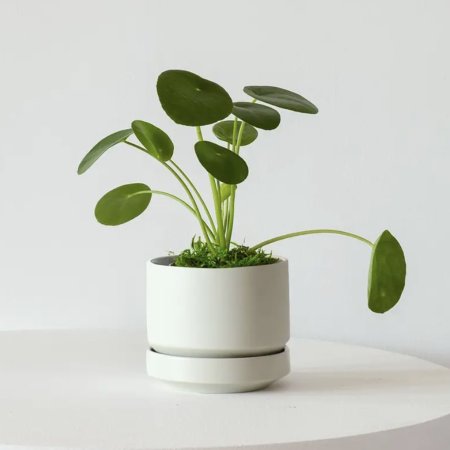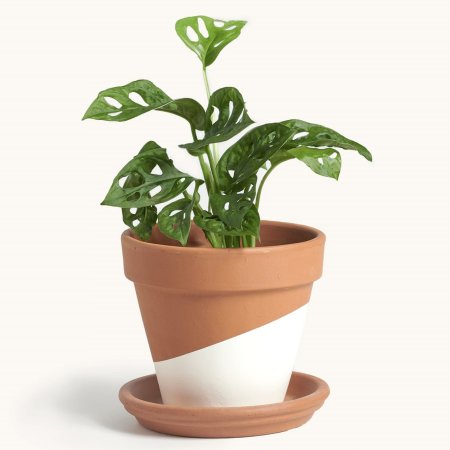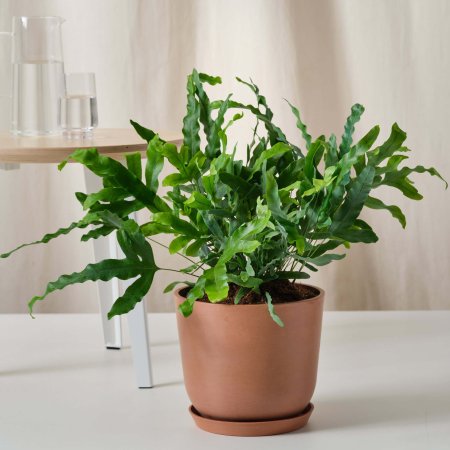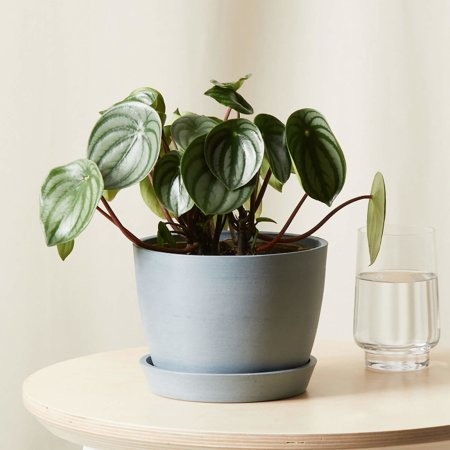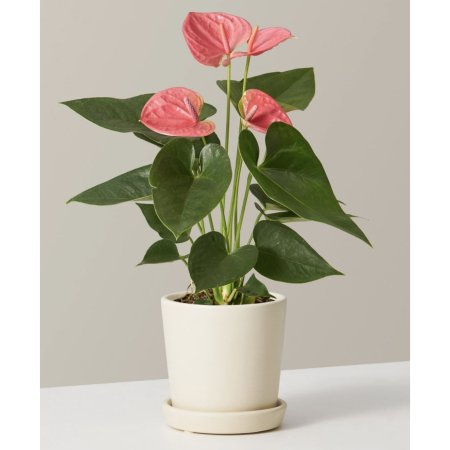We may earn revenue from the products available on this page and participate in affiliate programs.
Reading up on Domino’s shopping guides is like having your own personal product concierge. We do the tedious part—deep-dive research, hands-on testing, and tapping experts for advice—so all you have to do is hit “add to cart.” That’s why we call them Simply the Best.
If you’ve had the unfortunate experience of watching a plant you’ve cared for wither and travel to the great beyond, you won’t be blamed for thinking that horticulture is not for you. However, choosing the best apartment plants really depends on identifying what works for you and your lifestyle. It sounds deceptively simple, but sometimes it helps to hear the basics said out loud. Ariel Kaye, the founder of home goods label Parachute—and a firm believer in plants’ ability to enhance the coziness of the home—emphasizes, “If you don’t have much time to spare while you’re learning to care for plants, I recommend starting with an easy-to-care-for option, like a spider plant, and work up to fussier varieties.”
Rather than feel constrained to beginner-level plants, your personal preferences should still play a role in choosing the right match. “Don’t be afraid; just start somewhere,” says chef and plant enthusiast Camilla Marcus. “Try a few varieties of indoor plants and see what works best for you and your space. I think plants have personalities; they work differently in different places, so be open to adapting as you go.”
Ready to give your green thumb a whirl? Here are our picks for the best apartment plants suited for indoor living—and where to find them.
Our Favorites
- Best overall: Pilea Peperomioides
- Most eye-catching: Philodendron Swiss Cheese
- Best air purifier: Blue Star Fern
- Best for low-light situations: Peperomia Watermelon
- Best for flowering: Pink Anthurium
Best Overall: Pilea Peperomioides
Best Overall
Shop NowSize: Small | Light requirement: Bright, indirect | Watering schedule: Once a week or when soil is dry | Skill level: Beginner
What we like:
- Quirky, versatile form
- Hardy, fast growing, and easy to propagate
- Safe for pets
Worth noting:
- Susceptible to extreme temperatures
Why we chose it: The hardy, quirky pilea adds personality to small spaces with its memorable form.
Pilea peperomioides (say that five times fast) has been one of the most sought-after houseplant varieties in recent years—and for good reason. Some call it the Chinese money plant for its coin-shaped foliage, while others call it a friendship plant because of how easily its offshoots can be cut, repotted, and shared. This adorable plant cuts a strong figure whether placed on a shelf or in front of a window, though it does thrive best in bright, indirect light. The California-based plant shop Leon & George offers its buyers a 45-day guarantee: about the time it takes for plants to fully settle in. Low-maintenance and perfect for beginners, once acclimated, these plants should start showing new growth in as little as a few weeks.
Most Eye-Catching: Philodendron Swiss Cheese
Most Eye-Catching
Shop NowSize: Small | Light requirement: Medium-to-bright, indirect | Watering schedule: Once a week, prefers moist soil | Skill level: Moderate
What we like:
- Fast growing and easy to care for
- Purifies air
Worth noting:
- Avoid direct sunlight
- Tendency to vine
- Toxic to pets
Why we chose it: This eye-catching houseplant is a low-maintenance option that yields a high design return.
The Monstera adansonii, also known as the philodendron Swiss cheese, owes its distinctive appearance to its large heart-shaped leaves that naturally develop holes as the plant matures. (The scientific term is fenestration.) Notoriously easy to care for, this philodendron grows quickly and has a tendency to vine—you can often find it climbing up a moss pole, curling down from a suspended basket, or even crawling up the wall, making it one of the best hanging plants, too. If you pick one up at Horti, which vets its varieties specifically for indoor use in small apartments, you can choose from one of the shop’s design-forward terracotta pots for extra oomph. This one is toxic if consumed by pets, though, so keep it away from your furry friends.
Best Air Purifier: Blue Star Fern
Best Air Purifier
Shop NowSize: Large | Light requirement: Low to bright, indirect | Watering schedule: Once a week when soil is half dry | Skill level: Beginner
What we like:
- Nontoxic and pet-safe
- Purifies air, releasing oxygen and absorbing pollutants
- Low-maintenance
Worth noting:
- Encourage new fronds with regular trimming and watering
Why we chose it: The large fronds of this blue-gray fern transform the atmosphere in a room—literally. It’s an excellent air purifier.
The blue star fern is one easy-to-care-for houseplant with loads of added benefits. Not only do its geometric, zigzag-shaped fronds form a star shape as they mature, but the plant is known as a high-performing air purifier, with an ability to improve air humidity and absorb and neutralize harmful gasses. Thanks to having little leaf fall and being highly adaptable to a range of climates, this is definitely an underrated variety for indoor use. Unlike many ferns, it’s not superfussy when it comes to misting or providing extra humidity. We recommend picking one up from Bloomscape: The company’s free plant-care app, Vera, makes it easy to look after all your green friends. It also offers a 30-day guarantee.
Best for Low-Light Situations: Peperomia Watermelon
Best For Low-Light Situations
Shop NowSize: Small | Light requirement: Low to bright, indirect | Watering schedule: Once a week when soil is half dry | Skill level: Beginner
What we like:
- Tolerates low light
- Great for desks and tabletops
- Remains small even at maturity
Worth noting:
- Color fades if the light is insufficient
- Prefers to be thoroughly watered
Why we chose it: Elegantly striped and highly tolerant of low-light situations, this plant is an ideal roommate if light and space are in high demand.
In its natural habitat, the peperomia watermelon grows as dense ground cover in South American rainforests, making it one of the best low-light indoor plants. Plenty of plants, in fact, are pretty comfortable in low-light situations. As this peperomia matures, it remains compact, its saucerlike leaves growing up instead of outward—a perfect companion for tight spaces like desks or coffee tables. Remember, though, that low light doesn’t mean any light, and if it’s not getting enough sun, the colors of its leaves might fade. If you start to notice this happening, try rotating it toward a light source whenever possible while avoiding direct sunlight.
Best for Flowering: Pink Anthurium
Best For Flowering
Shop NowSize: Small | Light requirement: Bright, indirect | Watering schedule: Every 1 to 2 weeks when soil is dry | Skill level: Moderate
What we like:
- Long-lasting flowers
- Requires little maintenance
Worth noting:
- On the expensive side
- Benefits from extra humidity
- Not safe for pets
Why we chose it: Flowering plants aren’t usually easy to care for or great at being kept indoors, but this anthurium bucks convention.
Getting houseplants to flower indoors can sometimes be complicated, but for certain species, it comes naturally. Anthuriums, bromeliads, and orchids have particularly hardy, long-lasting flowers and don’t usually require extra work to make them happen. Anthurium blooms, like this bubblegum pink variety also known as the flamingo flower, pop up often and can last for up to eight weeks. In this case, the “blooms” are actually waxy leaves called spathes and are much harder than your average soft-petal flowers. If procured from The Sill, these plants come with a 30-day guarantee and in the planter of your choice—we think the pink flowers look particularly nice in the mint color.
How We Chose These Products
The best apartment plants made the cut based on their ease of maintenance, tolerance of varied lighting conditions, and style (obviously!). We also vetted the online shops that sell them based on the variety and quality of their collections and availability of plant-care support. Almost all stores will carry a foolproof snake plant or jade pothos, but what about a pitcher plant (Bloomscape), ric rac cactus (The Sill), or an XXL ficus Audrey tree (Leon & George)? These purveyors really go the extra mile in sourcing hardy varieties that are also special.
Aside from our own experience of trying to keep plants alive in small city apartments, we sought advice from trusted green thumbs like Kaye. She says, “Everyone’s personal preferences are different, but when finding your perfect houseplant, consider things like the availability of natural light, how much space you have to fill, if your plant will grow larger over time, and if you’re able to fulfill a plant’s maintenance needs. Selecting something just because it makes you happy is always fine, too!”
Our Shopping Checklist
Size
While size can matter (in terms of budget and skill level), Kaye urges budding plant parents to unpack varieties into the following categories: “Think of houseplants in terms of easy care (air plants, cacti, Chinese money plant, mother-in-law’s tongue, peacock plant, pothos, umbrella tree), striking shapes (aloe, calathea, monstera, palm trees), textural treats (asparagus fern, prayer plant, string of pearls, iron-cross begonia), and space fillers (rubber plant, split-leaf philodendron, parlor palm, fiddle-leaf fig),” she says. By approaching the best apartment plants in both practical and aesthetic ways, you’re more likely to find the right fit for your space and skill set, regardless of size.
Maintenance
Like every relationship, maintenance is the make or break. Even the most low-fuss plant varieties need a basic level of care. “When I say low light, it doesn’t mean no light,” says Christopher Griffin aka Plant Kween. “All green girls need an amount of light to sustain themselves in that wonderful process called photosynthesis.” When it comes to watering, Griffin breaks down how to know when your plant needs more: “One of the easiest things to do when watering is to put your finger in 2 inches and test the moisture around the soil. You don’t want to just tap the topsoil, you really want to make sure you’re checking the soil near the roots.” All varieties come with their own set of ideal conditions, but understanding the basics will really set you off on the right foot.
Environment
It’s no secret that having plants around can do wonders for your indoor environment. “Plants are natural air purifiers, cleaning the air in your home,” says Kaye. “They take care of us as much as we take care of them.” Varieties that are especially good at improving air quality include ficus, pothos, and sansevieria. If you have little ones (pets or children) running around your home, be sure to look out for plants that might be toxic to curious mouths.
Ask Domino
Q: Is lavender a good indoor plant?
Fragrant, colorful, and able to thrive in a self-contained pot, lavender is especially foolhardy, since it can cope with less attention and maintenance, although it does thrive with a few hours of direct sunlight each day. Despite both looking and smelling good, lavender is first and foremost a medicinal herb and can be used to aid sleep or soothe anxiety for an added bonus. If the scent of lavender ever gets too overpowering, these plants can easily transition outdoors and adapt to more fluctuating natural environments.
Q: Where is a good place to display plants in the home?
Aside from ensuring they get enough light, the best apartment plants can really help to brighten up a home. Kaye says: “They offer a literal breath of fresh air, especially in smaller spaces like apartments. The living colors, shapes, and textures elevate the space and can elevate your mood as well, even if it’s as simple as a bouquet of flowers or a small air plant.” For Marcus, keeping plants where you spend the most time helps in their maintenance. “For me, that’s the kitchen,” she says. “I’m a big fan of windowsill potted herbs—rosemary, oregano, thyme, mint, chives, even mushroom kits (I love the ones from Brooklyn-based Smallhold).”
The Last Word
Giving your apartment plants the best leg up in life boils down to getting a handle on the basics—providing enough light, checking the soil for dryness, and watering accordingly. With these three golden rules in check, there should be nothing stopping your green thumb from blossoming.
